Books
Books
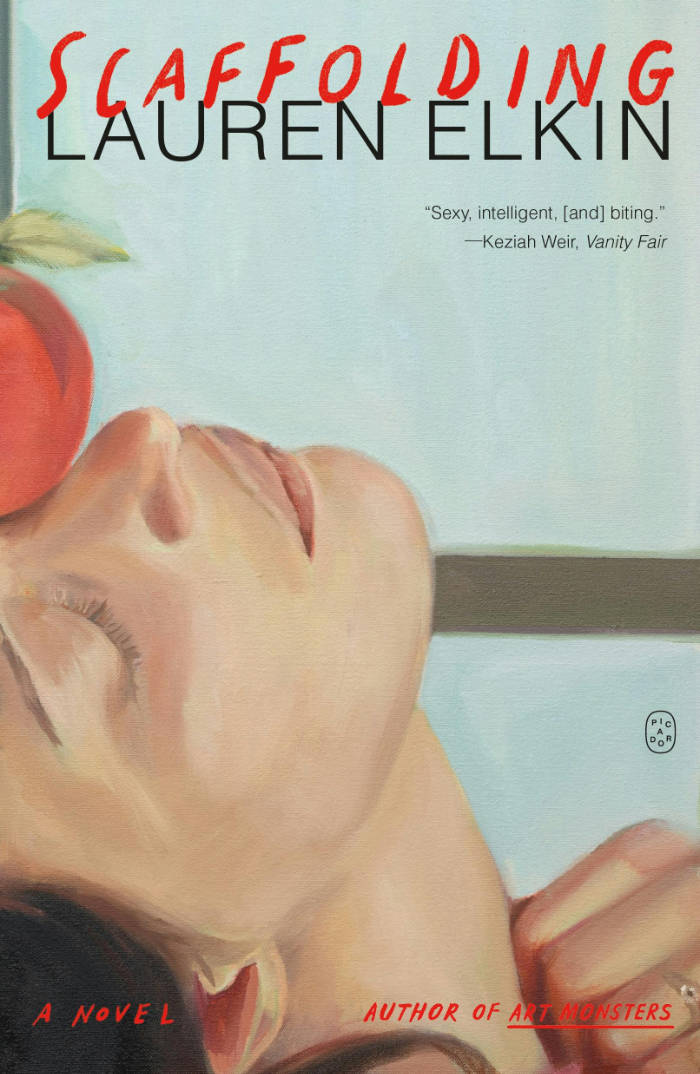
Scaffolding
The debut novel by the acclaimed author of Flâneuse and Art Monsters, Lauren Elkin’s Scaffolding is a story of Paris, desire, love, psychoanalysis, and the turbulent affairs of two couples across time.
Paris, 1972. The same apartment in Belleville. Florence and Henry are renovating their kitchen. She is finishing her degree in psychology, dropping into feminist activities, and devotedly attending the groundbreaking, infamous seminars held by the renowned analyst Jacques Lacan. She is hoping to conceive their first child, though Henry isn’t sure he’s ready for fatherhood.
Two couples, fifty years apart, face the challenges of marriage, fidelity, and pregnancy. They inhabit this same small space in separate but similar times—times charged with political upheaval and intellectual controversy. A novel in the key of Éric Rohmer, Lauren Elkin’s Scaffolding is about the way our homes collect and hold our memories and our stories, about the bonds we create and the difficulty of ever fully severing them, about the ways all the people we’ve loved live on in us.
Lauren Elkin is the author of Art Monsters and Flâneuse, a New York Times Book Review notable book and a finalist for the PEN/Diamonstein-Spielvogel Award for the Art of the Essay. Her essays have appeared in The New York Times, Le Monde, Frieze, and The Times Literary Supplement, among other publications. A native New Yorker, Elkin lived in Paris for twenty years and now resides in London.

The Stone Door
The Stone Door is a surrealist allegory intertwining myth, mysticism, and romance. Written by Leonora Carrington after World War II, the novel follows a woman's symbolic journey through esoteric teachings, ancient lands, and dreamlike visions in pursuit of spiritual awakening and the unification of male and female forces. Both a metaphysical adventure and a tribute to Carrington's personal love story, it offers a visionary exploration of transformation and liberation.
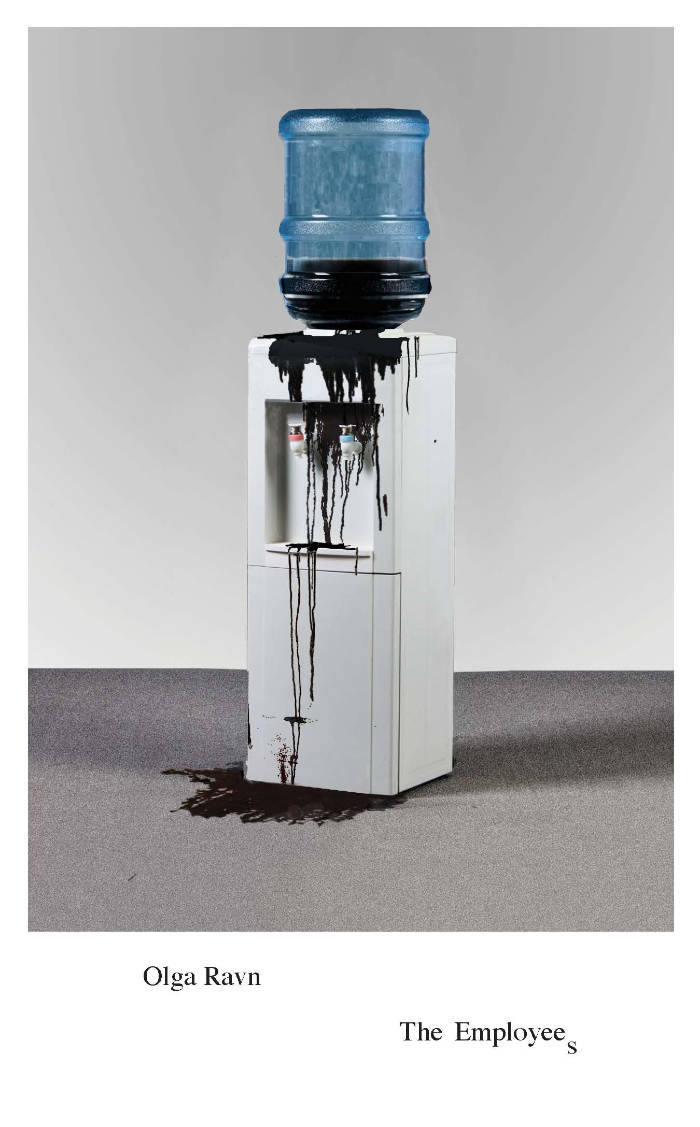
The Employees: A Workplace Novel of the 22nd Century
Shortlisted for the International Booker Prize, The Employees reshuffles a sci-fi voyage into a riotously original existential nightmare. Aboard the interstellar Six Thousand Ship, the human and humanoid crew members complain about their daily tasks in a series of staff reports and memos. When the ship takes on a number of strange objects from the planet New Discovery, the crew becomes deeply attached to them, even as tensions boil toward mutiny, especially among the humanoids. In chilling, crackling, and exhilarating prose, The Employees probes into what makes us human, while delivering a hilariously stinging critique of life governed by the logic of productivity.
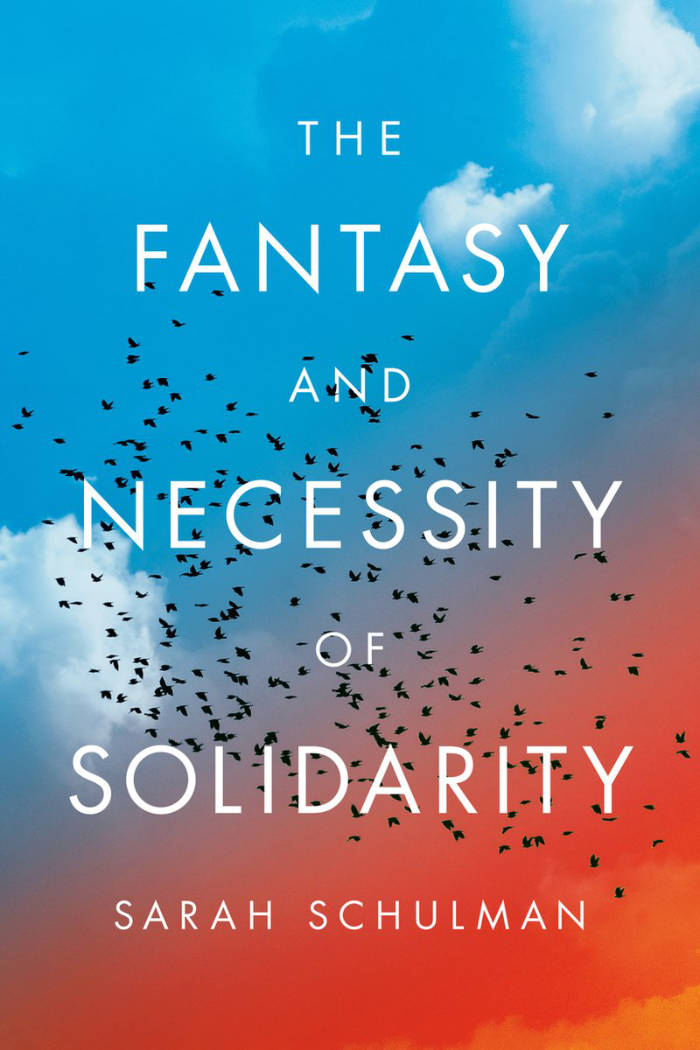
The Fantasy and Necessity of Solidarity
From award-winning writer Sarah Schulman, a longtime social activist and outspoken critic of the Israeli war on Gaza, comes a brilliant examination of the inherent psychological and social challenges to solidarity movements, and what that means for the future.
For those who seek to combat injustice, solidarity with the oppressed is one of the highest ideals, yet it does not come without complication. In this searing yet uplifting book, award-winning writer and cultural critic Sarah Schulman delves into the intricate and often misunderstood concept of solidarity to provide a new vision for what it means to engage in this work—and why it matters.
To grapple with solidarity, Schulman writes, we must recognize its inherent fantasies. Those being oppressed dream of relief, that a bystander will intervene though it may not seem to be in their immediate interest to do so, and that the oppressor will be called out and punished. Those standing in solidarity with the oppressed are occluded by a different fantasy: that their intervention is effective, that it will not cost them, and that they will be rewarded with friendship and thanks. Neither is always the case, and yet in order to realize our full potential as human beings in relation with others, we must continue to pursue action towards these shared goals.
Within this framework, Schulman examines a range of case studies, from the fight for abortion rights in post-Franco Spain, to NYC’s AIDS activism in the 1990s, to the current wave of campus protest movements against Israel’s war on Gaza, and her own experience growing up as a queer female artist in male dominated culture industries. Drawing parallels between queer, Palestinian, feminist, and artistic struggles for justice, Schulman challenges the traditional notion of solidarity as a simple union of equals, arguing that in today’s world of globalized power structures, true solidarity requires the collaboration of bystanders and conflicted perpetrators with the excluded and oppressed. That action comes at a cost, and is not always effective. And yet without it we sentence ourselves to a world without progressive change towards visions of liberation.
By turns challenging, inspiring, pragmatic, and poetic, The Fantasy and Necessity of Solidarity provides a much-needed path for how we can work together to create a more just, more equitable present and future.
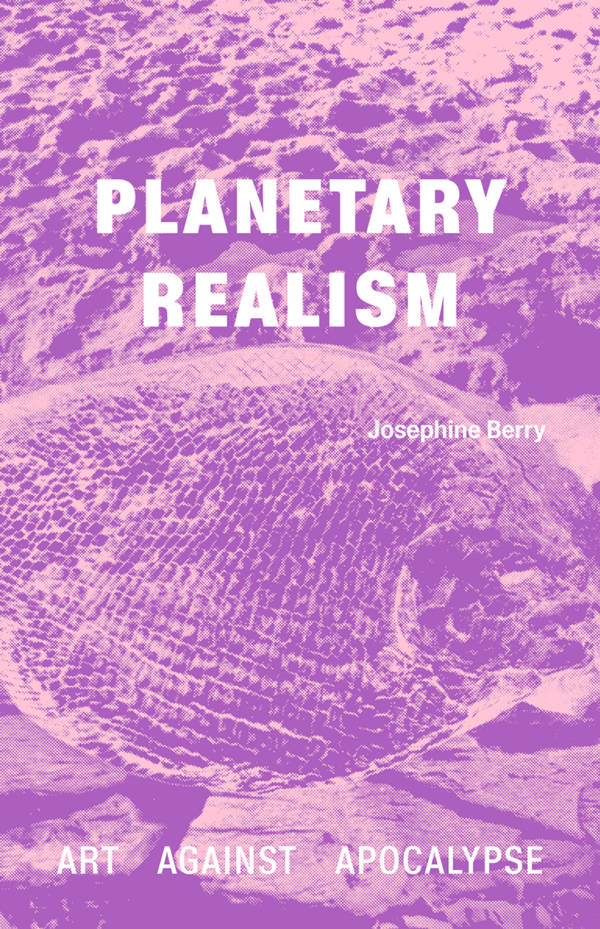
Planetary Realism – Art Against Apocalypse
Traditions of realism are brought together with the decolonial and ecological concept of "planetarity" to understand a new realism in contemporary art.
The devastation left in the wake of modernity and globalization is revealing a fragile and unfamiliar planet, and humanity has awakened to a new real. If the old "realist" tools of objectivism have contributed to capitalist society's divorce from the natural world, how are artists finding new ways to make us really see—and feel—the planet?
Surveying a body of planet-facing art, communal practices, and activism, Josephine Berry investigates art's power to break with capitalist realism and decarbonize the imagination. With chapters on feeling as world-making, the rupture of petroleum landscapes, artists' urban exodus, and migration as survival, Planetary Realism delves deeply into art's necessary reimagining of life on Earth.
"Planetary Realism is a deeply necessary book to add to our toolkit of struggle against a corporate world intent on destroying our planet for nothing but profit. Berry's book is a wake up call to artists and all those whose imaginations have not been destroyed by the consensensual silence surrounding the life or death issue of climate catastrophe. She dismantles the concept of art's autonomy to describe how artists all over the world are becoming artworkers for Planet Earth." — Peter Kennard, London-based artist and activist, and Emeritus Professor of Political Art at the Royal College of Art
"Through this superlative and vigorously argued version of a realism for today—meticulously attuned to planetary predicaments and the art and culture that inhabits them—Berry gives us means to map ways of being more hospitable, disobedient, migratory, alive, in the present." — Matthew Fuller, co-author of Bleak Joys: Aesthetics of Ecology and Impossibility, and Investigative Aesthetics: Conflicts and Commons in the Politics of Truth
Josephine Berry is an art theorist, writer and editor. She supervises thesis only and practice based PhDs in the School of Arts and Humanities, Royal College of Art, London, and teaches in Media Communication and Cultural Studies at Goldsmiths, University of London. She is a member of Mute magazine's editorial collective Mute and is a peer reviewer for the journal Theory, Culture & Society.
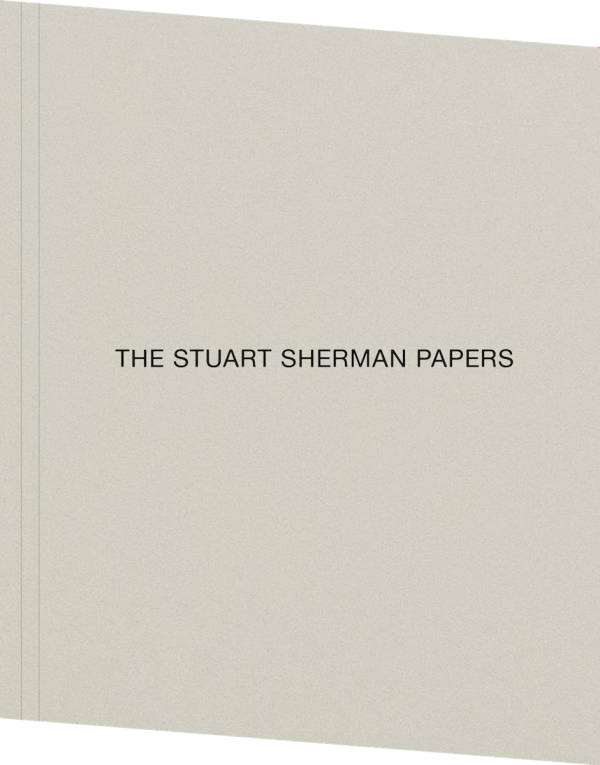
The Stuart Sherman Papers
This collection of poetry, prose, and other texts is the first publication dedicated to the writing of the late performance, video, and visual artist Stuart Sherman.
The Stuart Sherman Papers presents a selection of facsimile reproductions from his archive at New York University's Fales Library. This collection of entries is not exhaustive but conveys the diversity in Sherman’s writing, which used the ever-expanding vocabulary of the English language as a plastic material to study the abundance of meaning that can be derived through playing with combinations, order, and proximity of words. The texts reproduced here leave his edits, scribbles, and notes to self intact, presenting the page as Sherman last engaged with it.
With text contributions by Sally Banes, Mark Bradford, Michiel Huijben, and Nicholas Martin. Photographs by Nathaniel Tileston and Paolo Rapalino.
Editor: Michiel Huijben
Graphic design: Loes Verstappen
Copy editing: Harriet Foyster
Lithography: Marc Gijzen
Stuart Sherman (1945–2001) was a New York-based artist best known for his performances and video, but working in a variety of visual and literary media. He performed, exhibited, and lectured throughout the United States, Europe, and Asia. Sherman died of AIDS in San Francisco in September 2001.

Life with Fifi
Kris Dittel, Angelica Falkeling
A children’s book without a specific age category, offering a glimpse into the small rituals and shared moments that shape a day with Fifi Paris.
Fifi, a Pomeranian-Chihuahua mix, came into the lives of Angelica and Kris a few years ago. Taking care of a puppy is taking responsibility for building their world and letting the small animal transform yours. As her human caretakers, the authors created Fifi’s world with toys, cuddles, rules, snacks and walks in the park. In return, she transforms our world by bringing our community together and reminding us of the importance of caring for one another. In this book, Kris and Angelica narrate a day in the life of Fifi, from the moment she wakes up to when she falls asleep at night. Along the way, they share how they connect with her, how they see her understanding her surroundings and what she has taught them about companionship.
Design by Amy Suo Wu
Copy-editing by Clem Edwards
Photography by Lili Huston-Hertreich
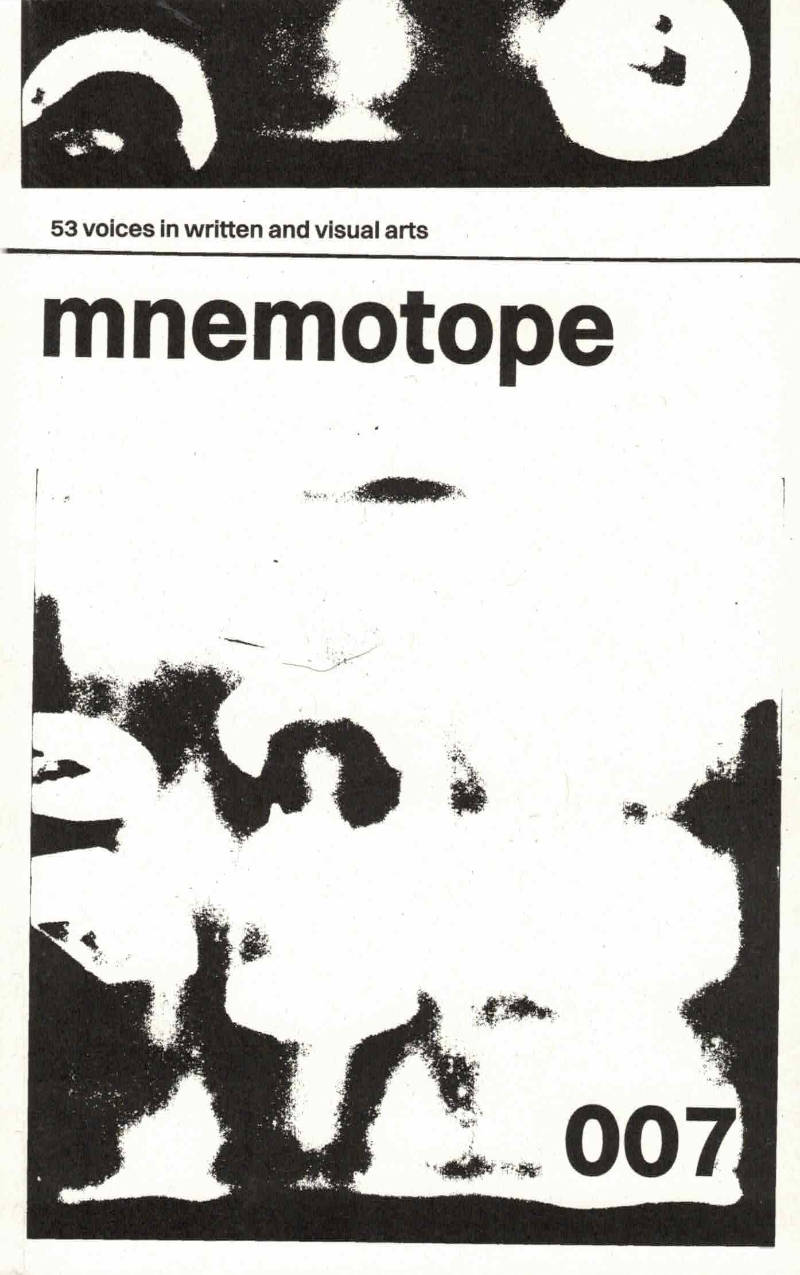
mnemotope 007
The seventh issue holds longer stories alongside the poems we’ve always so dearly loved. there’s less fantasy than in previous issues and more direct observations of the times we’re living in today; at times fearful, at times angry, at times joyful and warm. we might be predisposed to the slightly woowoo, but it does seem somewhat like a miraculously-timed message to us - this issue reminds us not to turn away from the things that are hard to face but to be uplifted by noticing the wonder around us, sharing both with community wherever we can.
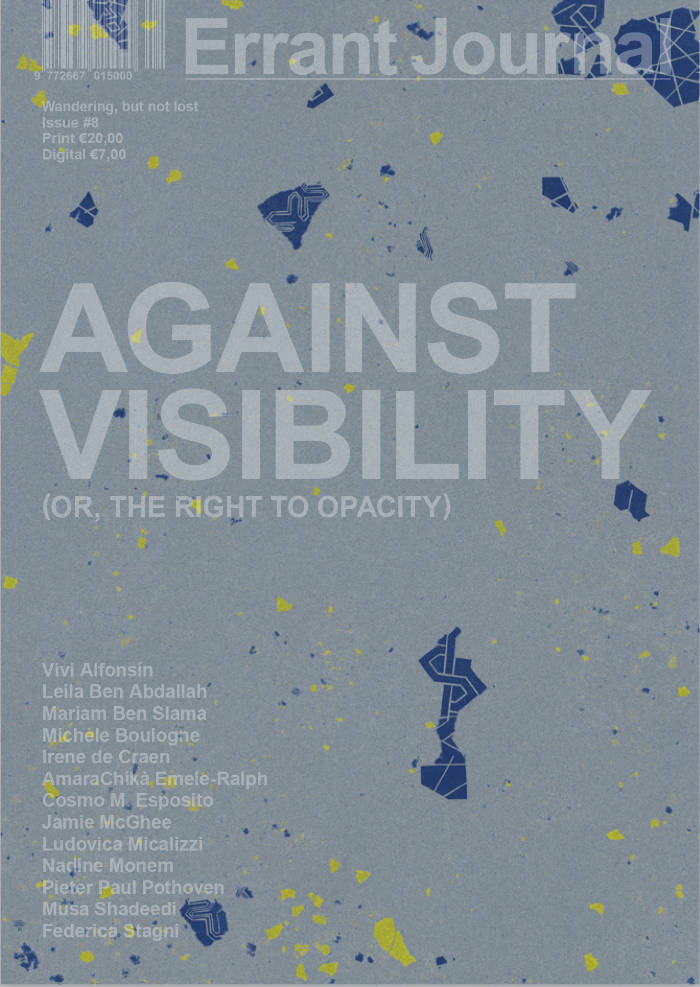
Issue #8 - Against Visibility (or, the Right to Opacity)
The eighth issue of Errant Journal questions the ways in which hegemonic culture and discourse tends to prioritize the ideal of openness, access, transparency, and visibility. Delving into topics such as face coverings, ‘coming out’ in queer discourses, the use of opacity in transformative justice, and different strategies of (visual) resistance, ‘Against Visibility’ can be read as a proposition of refusal of the paradigm of visibility and access that permeates all areas of western thinking. At a moment in which representation and uncovering ‘lost’ histories are trending, Errant asks what is being erased in a world where everything must always be visible. When Édouard Glissant proclaimed the right to opacity, he sought not to be reduced or to be measured against an ideal scale in order to be understood and accepted. Expanding from this, Against Visibility looks into the ways in which unlearning imperialism also includes unlearning the ideal of visibility itself.
Contributors: Vivi Alfonsín, Leila Ben Abdallah, Mariam Ben Slama, Michèle Boulogne, Irene de Craen, AmaraChíkà Emele-Ralph, Cosmo M. Esposito, Jamie McGhee, Ludovica Micalizzi, Nadine Monem, Pieter Paul Pothoven, Musa Shadeedi, Federica Stagni

¶#1: Backpacking
Wikipedia is not:
A paper encyclopedia
A dictionary
A publisher of original thought
A soapbox or means of promotion
A mirror or a repository of links
A memorial site
A manual or scientific journal
A dictionary
A crystal ball
A newspaper
An indiscriminate collection of information
¶#1 consists solely of texts and images found on the online collaborative platform Wikipedia. This publication contains many authors and we’d like to thank every one of them. ¶#1 is assembled by Annosh Urbanke. And includes a numbered print of her work Wadi Rum (2018).
Annosh Urbanke works as an artist and in the areas of art writing and curating. In her personal work she explores nostalgic and contemporary forms of tourism. While considering personal and collective experiences she looks at today’s consumption and performative elements of tourism. For ¶#1 she travelled through Wikipedia, looking for imaginary landscapes and fictitious cities. It is a critical and inspirational reading along all kinds of travelling that reach out to nowadays problematic (meta) realities of consumer tourism.
Size: A2, folded to A4
Page run: 12
Edition: 150 + 250
Published: November 2020, reprint December 2024
Editor: Jan-Pieter 't Hart
Design: Tjobo Kho
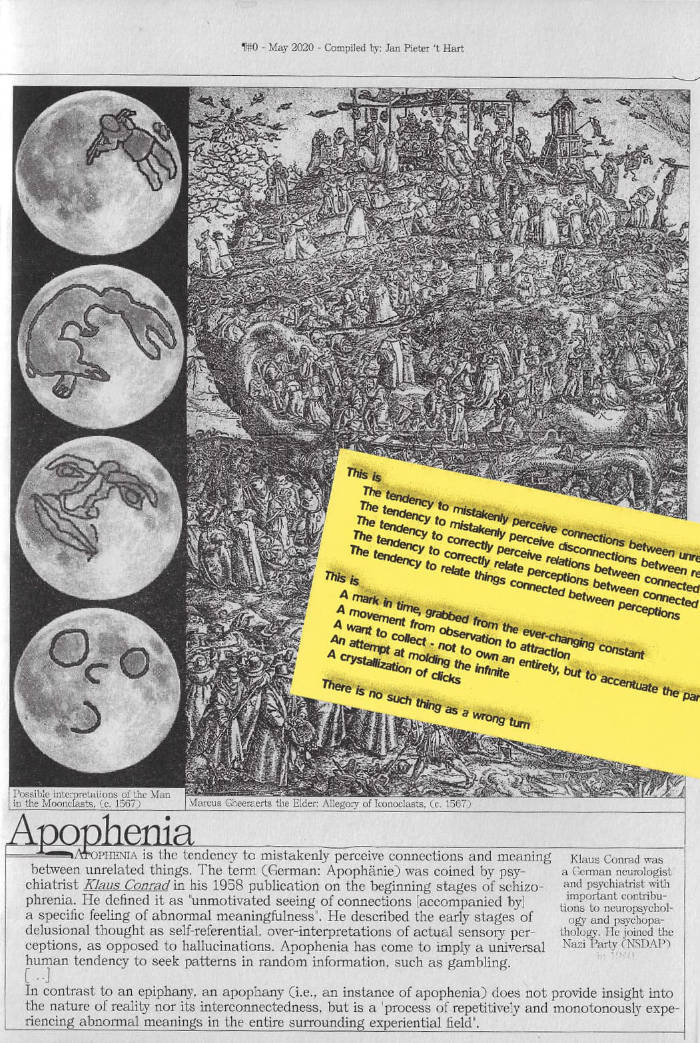
¶ #0: Apophenia
A mark in time, grabbed from the ever-changing constant
A movement from observation to attraction
A want to collect – not to own an entirety, but to accentuate the parts
An attempt at molding the infinite
A crystallization of clicks
¶#0 consists solely of texts and images found on the online collaborative encyclopedia Wikipedia. This publication, which is the first in the series, has many authors and we’d like to thank every one of them. It is assembled by Jan-Pieter ‘t Hart.
Jan-Pieter 't Hart (he/him) is an artist and art worker based in Amsterdam, working mostly in the fields of writing, sound, publishing and organizing. He co-runs a publishing platform called OUTLINE and a music community called corecore.
Size: 27,5 *18 cm
Page run: 16
Edition: 150 + 250
Published: May 2020, reprint December 2024
Design: Tjobo Kho

Répondeur
Slow Reading Club (SRC) is a semi-fictional reading group initiated and run by Bryana Fritz and Henry Andersen. Since 2016, in numerous contexts, they have rehearsed alternatives to the kinds of reading they were taught in school, actively suppressing semantic content through strobe lights, strange postures, sociality, and toxins. Operating at the contact zones between reader and text, text and text, reader and reader, they attempt to build a practice from within the unstable space of reading itself.
Répondeur is an extensive account of SRC’s practice in collective reading sessions, exhibitions, and textual bootlegging. Imagined as a scroll, with a rhyme structure and typesetting by Will Holder, the book brings together facsimiles of SRC readers, a wide-ranging interview by Alicja Melzacka, new texts by Joyelle McSweeney and Bill Dietz, and visual work and translations by SRC. These discrete elements are interwoven into a complex, shimmering whole, delighting in the ruptures and elisions of one text’s move into the next.

The First Jasmines
East Pakistan, 1971. On their way to visit their mother, two sisters, Lucky and Jamila, are captured by Pakistani soldiers and thrown into a world of horror.
Locked in a room in an unknown village-turned-camp by the river, the women look through a lone barred window onto white jasmines blooming day and night. Meanwhile, around the camp, deadly guerrilla fighters from the Bengali Mukti Bahini gather to take back territory from the Pakistan Army.
As Bangladesh crowns painfully into the world, Lucky and Jamila must choose between heartbreak and secrecy to return from an unspoken violence.
Saima Begum is a British-Bangladeshi writer based in North London. She won the MFest Short Story Competition in 2021. The First Jasmines is her first novel.
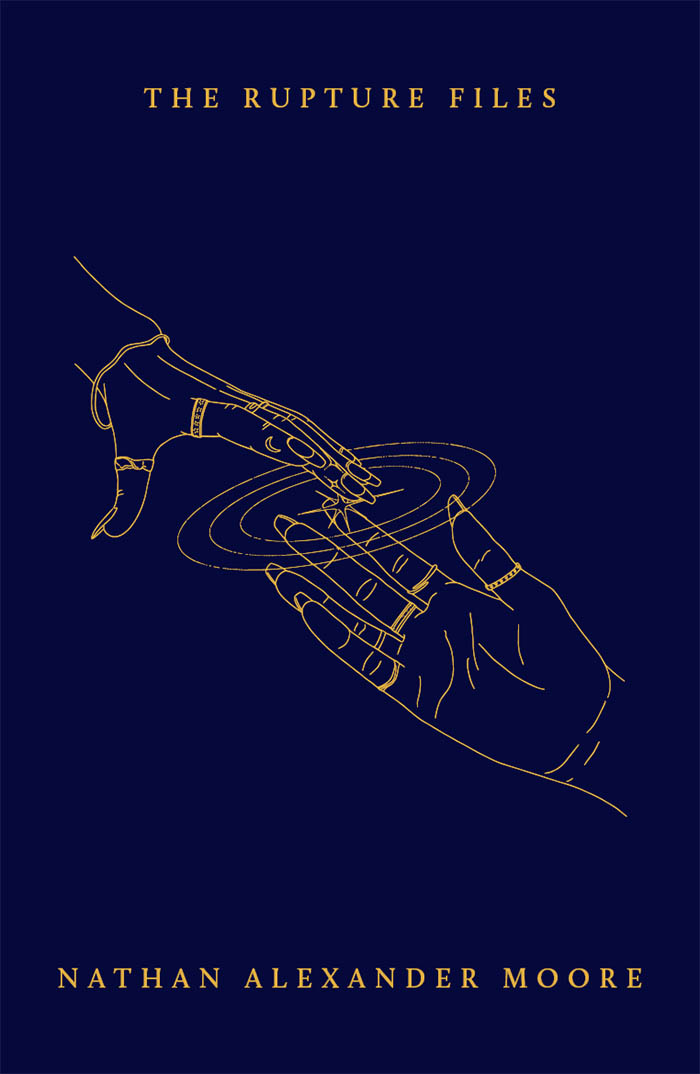
The Rupture Files
Across multiple worlds in upheaval, a curious cast of Black queer characters must choose between what they already know themselves to be and what they might yet become in the cataclysm. A shapeshifter learns to embrace their body as it changes through a lunar cycle. A stranger’s visit disturbs three sisters sheltering from monsters that stalk the land. An archivist hears an irresistible call to the rising ocean as she uncovers a surprising history. A mysterious fire sparks whispers of revolution in the mind of a vampire’s captive consort.
At once tender and audacious, Nathan Alexander Moore’s debut collection tells the stories of extraordinary creatures making impossible but human decisions. Traversing apocalypses both big and small, these captivating tales vibrate with the tensions between loss and growth; self and community; precarity and possibility.
Nathan Alexander Moore is a Black transfemme writer. She is an assistant professor at the University of Colorado Boulder whose research explores Black transfemininity, speculative fictions and temporality. Their debut chapbook, small colossus, was published in 2021, and their fiction was shortlisted for the 2022 Santa Fe Writers Project Literary Award. She was a 2023 Lambda Literary Fellow in poetry.

Short Talks
In Anne Carson's Short Talks the reader is bombarded with short prose poems that resound with the fullness of meditations on lyric sermons, riddle-poems that consist only of answers, Lou Reed meets Claude Monet and converts to Zen, the pure hilarious ache of ontology. SHORT TALKS, the first book-length collection by this accomplished, original voice, is elegiac, perceptive, and droll.

Barge Life: On Jean Vigo's L'Atalante
How to live together in cramped quarters? How to create a microcosm against hostile surroundings? In Barge Life, Florian Deroo tackles these questions by looking at a mythical classic of French cinema: Jean Vigo’s 1934 film L’Atalante. A work brimming with the energies of surrealism and anarchism, L’Atalante follows a young couple, two shipmates, and a clowder of cats who dwell in the belly of a river barge. Deroo offers a wide-ranging essay on the film, revealing how it lovingly delineates a small group that withdraws from the rhythms of modern life to establish a different kind of existence elsewhere. In L’Atalante’s most riveting moments, the river barge becomes a vehicle for a powerful fantasy: a supple and mobile collective life, lived in sensuous interdependence.
Combining film criticism, philosophy, and biography, Deroo’s Barge Life reconsiders an important forerunner to the French New Wave and the early death of its director. Drawing readers into the intimately cramped living spaces of L’Atalante, Deroo explores the allure of retreating into a self-sufficient shelter, along with its intractable problems.

Under The Sea
Taking the shape of an accordion-folded A3 poster, “Under The Sea” investigates the political economy of global internet infrastructures, whose material reality has temporarily become visible during fibre optic network expansion works in The Hague and other Dutch cities.
As internet users, we spend a lot of time underwater. Contrary to popular belief, satellites play a negligible role in beaming our intimate messages, cat footage and work emails across the globe.
99% of all intercontinental internet traffic travels through one of over 550 fibre optic cables criss-crossing our oceans. Despite its scale, complexity and many interlinkages with global systems of power, this network of cables and landing points commonly remains invisible.
Printing: Risograph, Stencilwerck Den Haag; English text and Photography: Livio Liechti; Dutch translation: Minke Havelaar; Design: Apsara Flury.
Edition of 250. Co-funded by Oxfam Novib.

MISSING
As our streets become ever more securitised and visually sanitised, and as most forms of everyday communications are shifting to the digital realm, homemade missing posters are one of the few remaining forms of paper-based citizen expression still found in public spaces.
Drawing on a collection of several hundred missing animal posters collected over the last 10 years, “MISSING” brings seemingly isolated text fragments into conversation to weave a narrative of loss and hope.
Featuring exaggerated duotone images, the publication explores the link between the weathering of physical posters and the fading away of cherished memories. While looking through these visual artefacts, one is left to wonder how many of these animals have been reunited with their families.
Printing: Risograph, Grafische Werkplaats Den Haag; Photography and colour separations: Livio Liechti; Design: Apsara Flury.
First print run (Blue) – Dec 2024: 40 copies.
Second print run (Teal) – May 2025: 50 copies.

Minibieb
Infrastructural systems define our ways of seeing and responding to the world around us. Today, our everyday lives and visual cultures have become saturated by digital communications systems whose physical footprint has been rendered largely invisible from the public sphere.
In an age of ever-expanding computation and a foolish believe in AI’s utopian potential, resistance can seem futile. But if we detach our gaze from increasingly narrow realm of digital imaginaries, a new world of radically different infrastructural opportunities opens up in front of our eyes.
Street libraries, or Minibiebs, as they are called in Dutch, are an under-appreciated piece of urban technology. Part manifesto, part research note, this mini publication dives into the radical potential of public book sharing structures and what they might tell us about our broken information ecosystem.
Printing: Risograph, Grafische Werkplaats Den Haag; Research and Photography: Livio Liechti; Design: Apsara Flury.
First print run – May 2025: 35 copies.
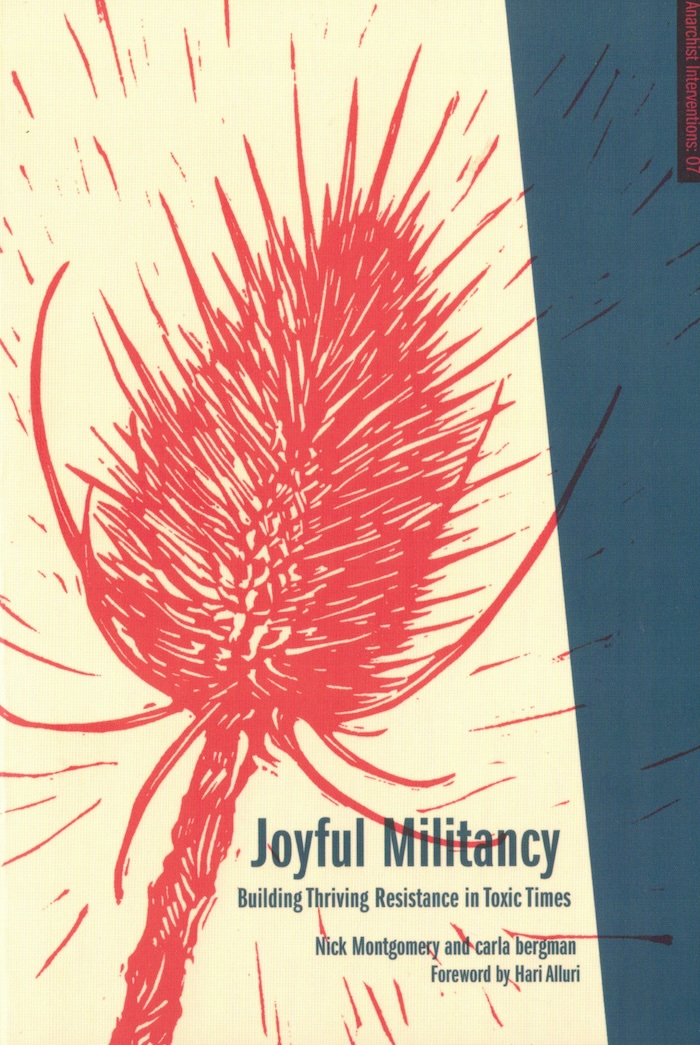
Joyful Militancy
Nick Montgomery, Carla Bergman
"Absolutely what we need in these days of spreading gloom. A very well argued case for joyful militancy, and against the dead hand of puritanical revolution. Read it, live it!” — John Holloway, author of Crack Capitalism
Why do radical movements and spaces sometimes feel laden with fear, anxiety, suspicion, self-righteousness, and competition? Montgomery and bergman call this phenomenon rigid radicalism: congealed and toxic ways of relating that have seeped into social movements, posing as the “correct” way of being radical. In conversation with organizers and intellectuals from a wide variety of political currents, the authors explore how rigid radicalism smuggles itself into radical spaces, and how it is being undone.
Interviewees include Silvia Federici, adrienne maree brown, Marina Sitrin, Gustavo Esteva, Leanne Betasamosake Simpson, Walidah Imarisha, Margaret Killjoy, Glen Coulthard, Richard Day, and more.
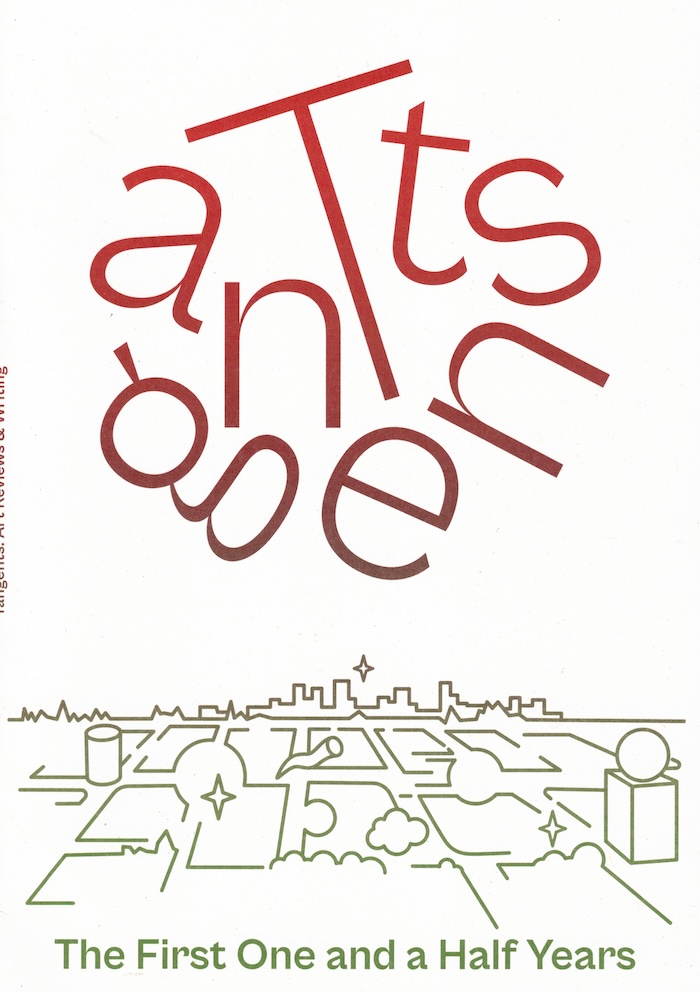
Tangents
Isabelle Sully, Becket Flannery and 1 more
Tangents is an English-language online review platform focused on writing about the Dutch art scene-on what is happening both within the borders of the Netherlands and about Dutch-based artists presenting work beyond them. Born from a frustration with the prevalence of objectivity and imposing house styles in the majority of art writing commissioned by leading platforms, Tangents instead encourages contributors to approach criticism from within the specificities and focuses of their own writing practice.
Tangents publishes a monthly review written by a writer from our stable of permanent contributors. This publication is the first printed compendium of recent writing, published on the occasion of Tangents' mentorship pro-gram, for which the founding editors each supported a young writer through development and to publication. The 2024/25 mentees were Mehmet Süzgün, Lou Vives and Dido W.

Fidback, Revue de cinéma n° 01
Le numéro 1 de la revue de cinéma Fidback éditée par le FIDMarseille, avec un retour sur la 35e édition du festival, un regard rétrospectif sur des films qui ont fait l'actualité mondiale du cinéma en 2024, une carte blanche à Clara Schulmann, et un portrait de l'artiste et cinéaste Declan Clarke par Alice Leroy.
Retour sur six films issus de la sélection officielle du FID, par des auteurs, critiques et écrivains de langues française et étrangères. Les textes critiques sont accompagnés d'entretiens, de documents ou de matériaux inédits. De Amsevrid, premier film magistral du cinéaste algérien Tahar Kessi, jusqu'au Tríptico de Mondongo du maestro argentin Mariano Llinás, ce bouquet de films est un condensé de l'édition 2024 du festival – une poignée de films parmi tous ceux qui auraient mérité le retour.
Le choix des huit films sur lesquels nous avons invité des auteurs et autrices à poser leur regard est en soi un geste critique. Il nous a semblé que les derniers films d'Albert Serra, Miguel Gomes, Alain Guiraudie, Jia Zhangke et Victor Iriarte méritaient plus que d'autres l'inscription dans le temps long de la revue. Films restaurés, écrits édités, rétrospective et exposition au Jeu de Paume : Chantal Akerman fut pour beaucoup, cette année, une révélation. Naked Acts, le film ressuscité de Bridgett Davis, aura marqué ceux qui ont eu la chance de le voir.
Pour sa carte blanche, Clara Schulmann a choisi le film Lucciole (2021), de Pauline Curnier Jardin. Mais son texte porte au-delà de l'œuvre, il déplace le geste critique en un récit spéculatif sur la manière dont une vie et un travail se tissent sur une trame faite de lieux, d'histoires, de personnes.
Alice Leroy est la première à faire le portrait de l'artiste et cinéaste irlandais et berlinois Declan Clarke : à prendre la mesure, à tracer les perspectives d'une œuvre majeure, bien qu'encore méconnue, du cinéma d'aujourd'hui.
Fidback est une revue de cinéma éditée par le FIDMarseille. Chaque année, elle dessine une image-constellation du cinéma aimé et défendu par le festival.
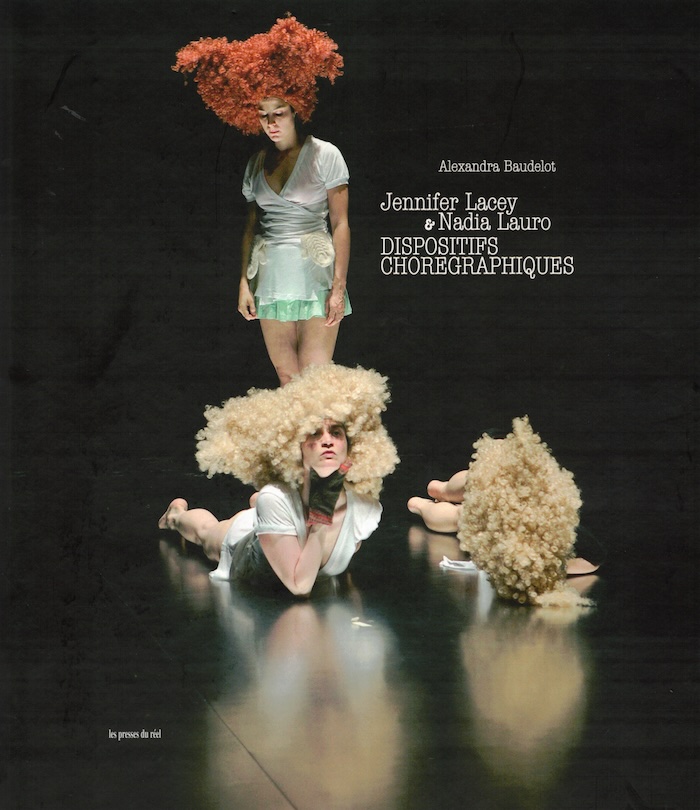
Jennifer Lacey & Nadia Lauro – Dispositifs chorégraphiques
Un essai consacré au travail de la chorégraphe et danseuse Jennifer Lacey et de la plasticienne et scénographe Nadia Lauro, qui rend compte de l'univers visuel des deux artistes au travers de nombreuses illustrations.
Dans cet essai, Alexandra Baudelot s'attache à saisir l'ensemble des œuvres co-écrites par la chorégraphe Jennifer Lacey et la plasticienne et scénographe Nadia Lauro, en observant de quelle manière elles s'architecturent les unes aux autres pour constituer des extensions inédites d'une forme artistique vers une autre.
Elle les observe à la manière de parcours envisagés comme des supports d'expériences cherchant à déborder constamment ses propres cadres de représentation. Ceci afin de saisir les politiques mises en jeu pour penser le corps, sa place dans un environnement fictif ou quotidien, son impact dans les enjeux chorégraphiques contemporains et ses liens avec notre époque.
L'espace de cet essai se prête également à l'univers visuel des deux artistes qui se livrent ici à un jeu de construction entre l'exploration d'images d'archive, de déclinaisons de projets inédits et périphériques aux pièces publiques, d'illustrations, et d'exposition d'un portfolio de dessins.
Originaire de New York, la chorégraphe et danseuse Jennifer Lacey est établie à Paris. Depuis 1991, elle a développé son propre travail chorégraphique qui a été présenté aux États-Unis (P.S. 122, The Kitchen) et en Europe (Klapstuk Festival, Vienna Festival, Danças na Cidade, Biennale d'art contemporain de Lyon, Big Torino). Depuis qu'elle réside en France, elle a créé et présenté plusieurs œuvres : $Shot (Lacey / Lauro / Parkins / Cornell), Châteaux of France no. 2 et no. 3, un projet conçu en collaboration avec Nadia Lauro, et Prodwhee!, une série de courts modules. En 2002, elle a été accueillie en résidence aux Laboratoires d'Aubervilliers. Jennifer Lacey a collaboré à différents projets avec de nombreux artistes : Loïc Touzé, Boris Charmatz, Emmanuelle Huynh, Benoît Lachambre, Catherine Contour et Latifa Laâbissi. Elle développe actuellement ses créations au sein de l'association Megagloss.
Nadia Lauro est artiste visuelle et scénographe basée à Paris. Elle développe son travail dans divers contextes et conçoit des environnements, des installations visuelles et des costumes pour différents projets chorégraphiques. Outre Jennifer Lacey, elle collabore notamment avec les chorégraphes Ami Garmon, Vera Montero, Benoît Lachambre, Frans Poelstra, Barbara Kraus, figures de la danse contemporaine en Europe. En 1998, elle fonde avec l'architecte paysagiste Laurence Crémel l'association Squash Cake Bureau – scénographie et paysage au sein de laquelle elle conçoit des installations paysagères et du mobilier urbain. Elle a également créé la scénographie de plusieurs défilés de mode.
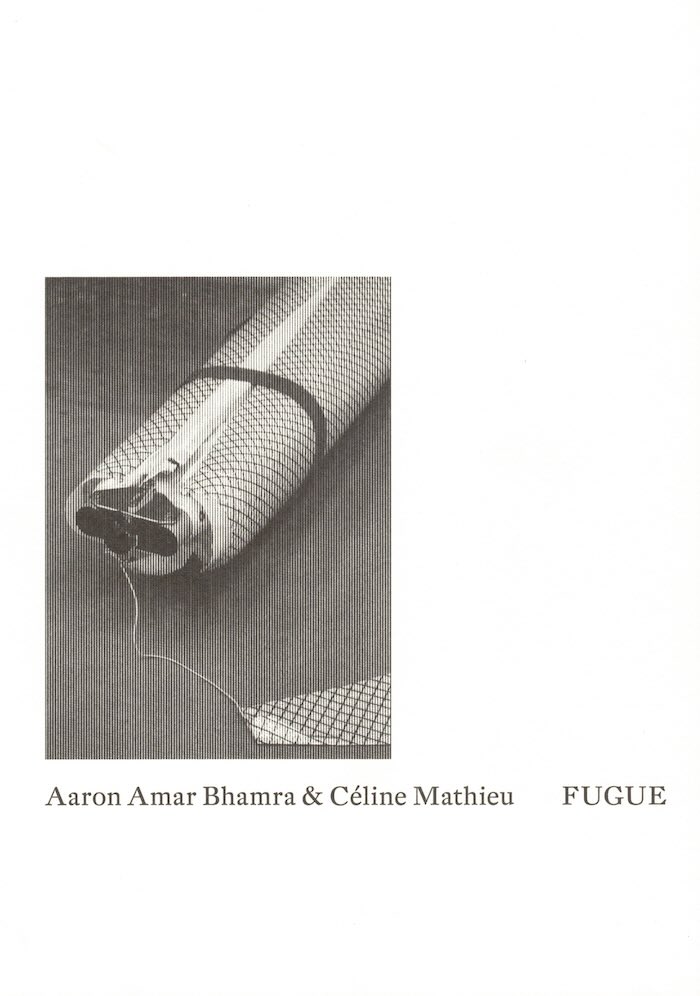
Fugue
Aaron Amar Bhamra, Céline Mathieu
Fugue is published on the occasion of the eponymous duo exhibition by artists Aaron Amar Bhamra and Céline Mathieu, presented at Jester in Genk, Belgium. The title, derived from the Latin fuga (flight), evokes both its musical and psychological meanings: a contrapuntal compositional technique and a state of dissociation. These dual connotations—aural and mental—resonate throughout the exhibition and this accompanying publication.
Céline Mathieu's work moves between the sensory and the conceptual, integrating multiple media to explore the circulation of thoughts and materials in relation to specific sites. Aaron Amar Bhamra's practice draws on recurring forms and materials to construct evolving personal and social archives, often reactivating exhibition spaces by engaging with their historical contexts.
In addition to documenting the exhibition, the publication features an introduction by Jester's artistic director Koi Persyn, a visual score of a sound composition by Charlie Usher, written contributions by Céline Mathieu, curator Eloise Sweetman, and researcher Johanna Schindler, as well as a series of analog photographs by Aaron Amar Bhamra.
Contributions by Koi Persyn, Céline Mathieu, Charlie Usher, Eloise Sweetman, Johanna Schindler, Aaron Amar Bhamra.
Austrian artist Aaron Amar Bhamra (born 1992) often procures exhibition spaces that subtly expose their systematics and physical experience by incorporating imprints reminiscent of other spaces or past exhibitions. He occasionally uses recurring forms and materials, weaving a site of shifting personal and social archives.
Céline Mathieu (born 1989) is a Belgian artist and writer. Her practice is often site and condition specific, using sound, scent, sculpture, performance, text and different materials in performative installations. The work is both sensory and conceptual. Her work looks into the circulation of thoughts and materials. Material and economic cycles merge with hyper-personal items, resulting in fluid work that cannot quite be pinned down.